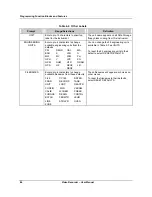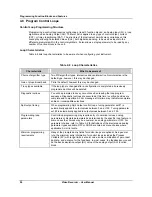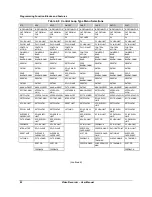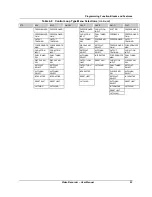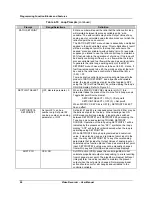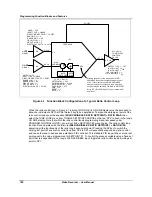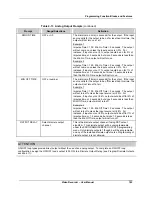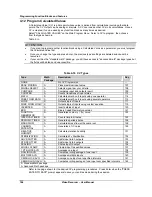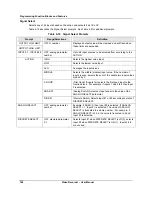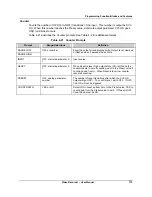
Programming Function Blocks and Features
Video Recorder – User Manual
99
Table 4-10 Loop Prompts
(continued)
Prompt
Range/Selections
Definition
SP INC SLEW LIMIT &
SP DEC SLEW LIMIT
Enter a number
Working set point slew limits for increasing and decreasing
slew rates. (Variable slew limits are available by
programming a constant's Destination with IS or DS. See
Program Constants, Section 4.16.)
SP LOW LIMIT & SP
HIGH LIMIT
OFF or number
Limits will be imposed on the working set point value,
regardless of source. A set point value above or below the
limits will be entered into the loop at the limit value. OFF entry
will assume process variable limits. (Variable limits are
available by programming a constant's Destination with HS or
LS. See Program Constants, Section 4.16.)
SP1 TRACKING
SP2, NONE
A selection of Set point #2 will cause the Set point #1 value to
be set to the Set point #2 value on a transfer from Set point
#2 to Set point #1. Set point #1 adjustment may be made
after the transfer.
SUPPRESS
OVERSHOOT
YES, NO
This parameter set to YES limits overshoot of the Set point
(SP) by the Process Variable (PV) after a disturbance in the
process such as a load or SP change. Through fuzzy logic,
the working SP of the control loop is dynamically modified by
the control algorithm to reduce or eliminate overshoot.
ATTENTION
Regardless of the setting of this SUPPRESS OVERSHOOT selection, overshoot is not suppressed when the process
disturbance causes an initial deviation (PV-SP) value between -0.7 and +0.7 engineering units. Consequently,
overshoot may not be suppressed in applications which require numerically small control loop PV ranges such as
carbon potential where this range is typically 0.0 to 2.0 engineering units.
WILD VARIABLE
Enter an analog input (AIn OV) or calculated value (CVn OV)
parameter that represents a second input signal applied to
the ratio control loop whose value will be multiplied by the
RATIO SETPOINT multiplier. The product of this multiplication
may be specified as the ratio control loop’s working set point
and can be biased by specifying a RATIO BIAS value. This
input parameter is referred to as the “WILD VARIABLE” since
the ratio loop has no control over its value whatsoever. In the
fuel-air ratio control examples used in RATIO SETPOINT
AND RATIO BIAS, fuel flow was for all intents and purposes
the WILD VARIABLE.
Note that the typical function block diagram one will use to
represent a ratio control loop is illustrated in Figure 4-1.
Содержание VRX180
Страница 1: ...Issue 3 03 03 US1I 6228 Video Recorder VRX180 User Manual ...
Страница 2: ...Issue 3 03 03 US1I 6228 ...
Страница 6: ...iv Video Recorder User Manual ...
Страница 48: ...Installation Video Recorder User Manual 34 ...
Страница 222: ...Setpoint Profiler Video Recorder User Manual 208 ...
Страница 234: ...Online Operations Using Primary Displays Video Recorder User Manual 220 ...
Страница 278: ...Appendix A Video Recorder User Manual 264 ...
Страница 290: ...Safety Video Recorder User Manual 276 ...


